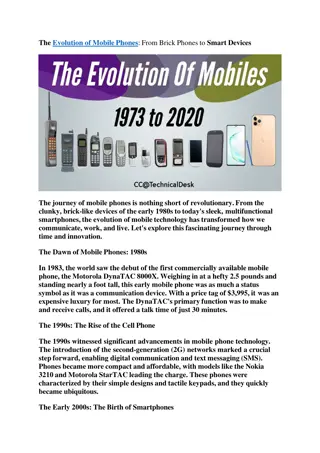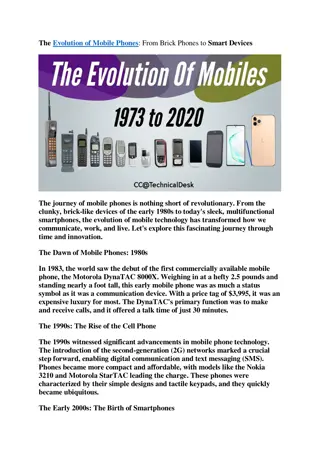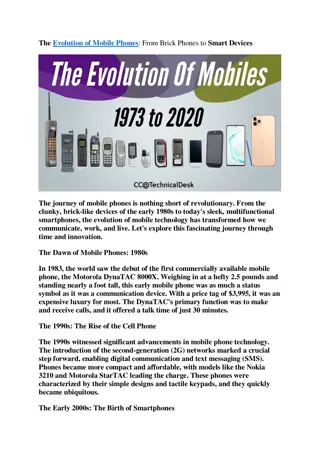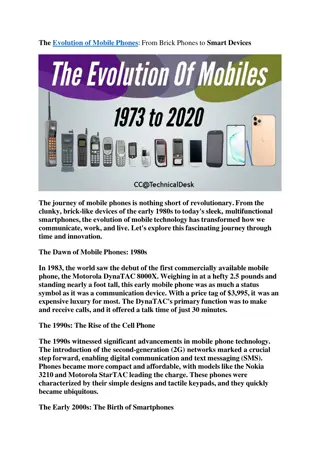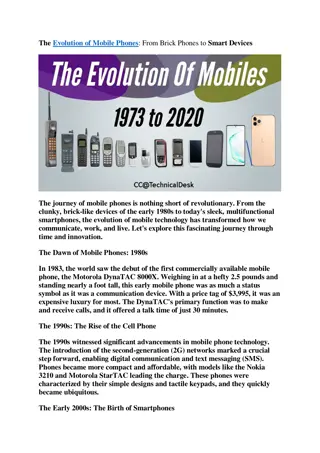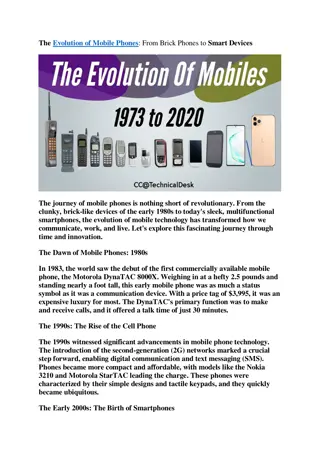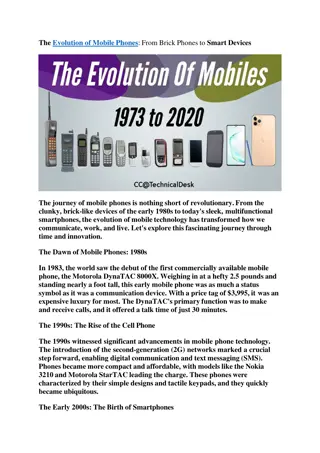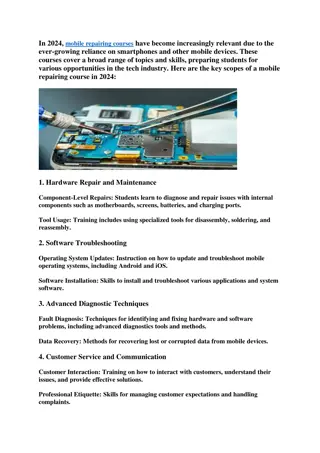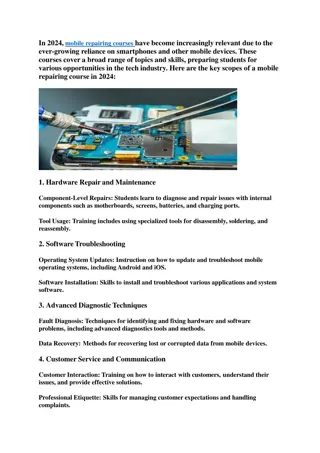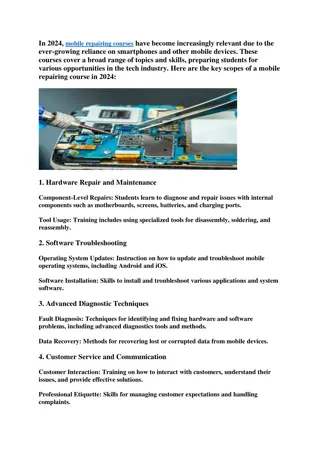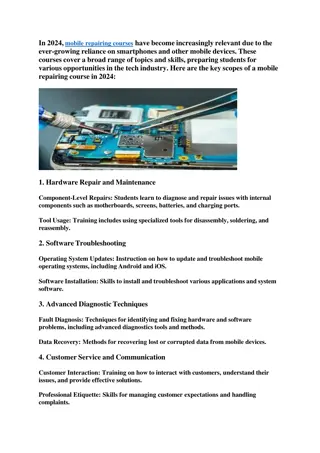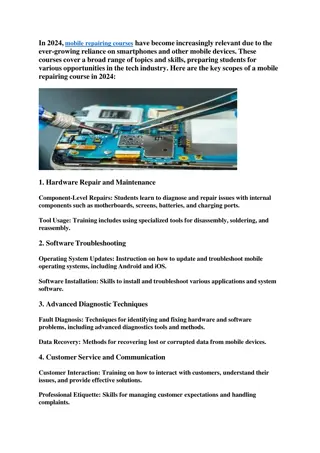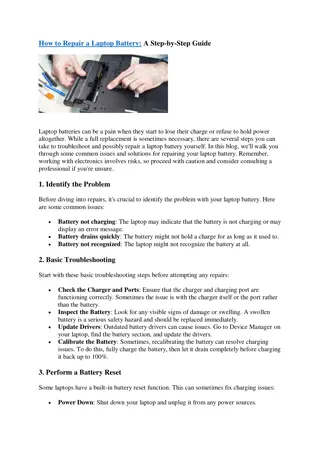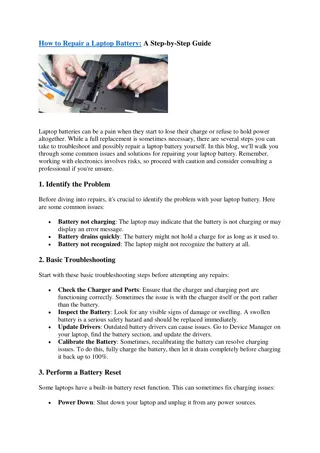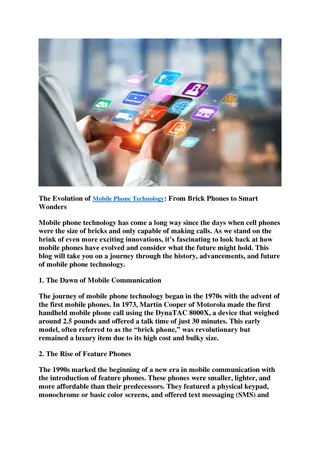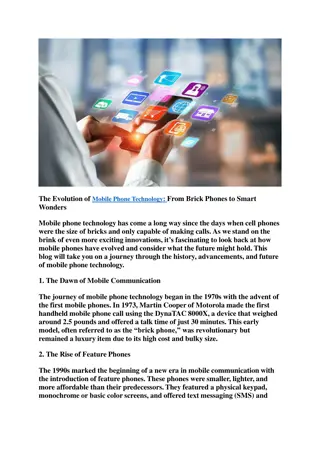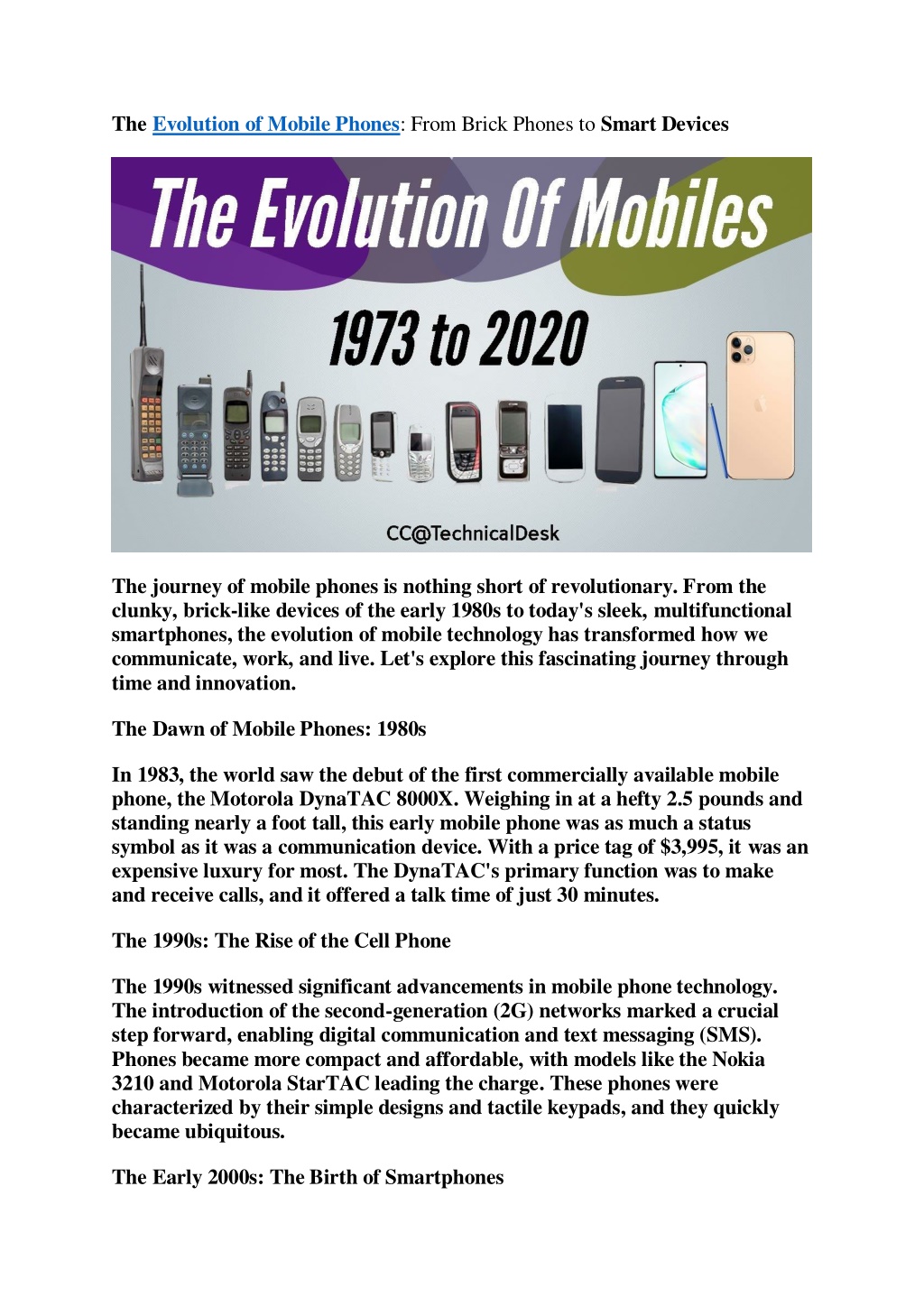
THE BEST MOBILE REPAIRING COURSE
Mobile repairing course become the best mobile repairing engineer in just 90 days and earn 40 to 50 thousand per month!!nWhy you should join hitech ?n-free advance toolkitn-free study material n-free circuit chart and bagn-free Oca course n-fre
Download Presentation

Please find below an Image/Link to download the presentation.
The content on the website is provided AS IS for your information and personal use only. It may not be sold, licensed, or shared on other websites without obtaining consent from the author. If you encounter any issues during the download, it is possible that the publisher has removed the file from their server.
You are allowed to download the files provided on this website for personal or commercial use, subject to the condition that they are used lawfully. All files are the property of their respective owners.
The content on the website is provided AS IS for your information and personal use only. It may not be sold, licensed, or shared on other websites without obtaining consent from the author.
E N D
Presentation Transcript
The Evolution of Mobile Phones: From Brick Phones to Smart Devices The journey of mobile phones is nothing short of revolutionary. From the clunky, brick-like devices of the early 1980s to today's sleek, multifunctional smartphones, the evolution of mobile technology has transformed how we communicate, work, and live. Let's explore this fascinating journey through time and innovation. The Dawn of Mobile Phones: 1980s In 1983, the world saw the debut of the first commercially available mobile phone, the Motorola DynaTAC 8000X. Weighing in at a hefty 2.5 pounds and standing nearly a foot tall, this early mobile phone was as much a status symbol as it was a communication device. With a price tag of $3,995, it was an expensive luxury for most. The DynaTAC's primary function was to make and receive calls, and it offered a talk time of just 30 minutes. The 1990s: The Rise of the Cell Phone The 1990s witnessed significant advancements in mobile phone technology. The introduction of the second-generation (2G) networks marked a crucial step forward, enabling digital communication and text messaging (SMS). Phones became more compact and affordable, with models like the Nokia 3210 and Motorola StarTAC leading the charge. These phones were characterized by their simple designs and tactile keypads, and they quickly became ubiquitous. The Early 2000s: The Birth of Smartphones
The early 2000s ushered in a new era with the introduction of the first smartphones. The IBM Simon, released in 1994, was one of the first devices to combine mobile phone functionality with PDA features. However, it was the launch of the BlackBerry and the Palm Treo in the early 2000s that truly began to blur the lines between phones and handheld computers. These devices introduced features like email, web browsing, and advanced messaging. 2007 and Beyond: The Smartphone Revolution The game-changer came in 2007 with the introduction of the Apple iPhone. The iPhone revolutionized the mobile industry by combining a touch screen with an intuitive user interface and a plethora of apps. Its release marked the beginning of the third generation (3G) of mobile networks, which brought faster data speeds and improved internet access. The iPhone's success was soon followed by other major players like Android phones, which further accelerated the shift towards smartphones. The integration of high-resolution cameras, powerful processors, and vast app ecosystems transformed mobile phones into multifunctional devices. This period also saw the rise of 4G networks, which significantly boosted data speeds and enabled more advanced mobile applications. The 2010s: Innovation and Integration The 2010s were marked by rapid technological advancements. Smartphones became even more powerful with the introduction of features like facial recognition, augmented reality (AR), and advanced AI capabilities. Companies began to experiment with new designs, such as edge-to-edge screens and foldable devices, pushing the boundaries of what mobile phones could be. Battery life and charging technology also saw significant improvements. The advent of fast charging and wireless charging made powering up devices quicker and more convenient. The 2020s: The Future Unfolds As we move through the 2020s, mobile phones continue to evolve at a rapid pace. The focus has shifted towards 5G technology, which promises to deliver faster speeds, lower latency, and more reliable connections. Foldable and rollable screens are becoming more mainstream, offering users new ways to interact with their devices.
Additionally, mobile phones are increasingly integrated with other aspects of daily life, including health monitoring, home automation, and augmented reality experiences. Advances in AI are making smartphones smarter and more intuitive, with features like virtual assistants and real-time translation becoming commonplace. Looking Ahead The future of mobile phones promises even more exciting developments. With ongoing advancements in AI, machine learning, and immersive technologies like virtual reality (VR), the next generation of mobile devices will likely offer even more transformative experiences. As technology continues to evolve, mobile phones will remain at the forefront of innovation, shaping how we connect with the world around us. From their humble beginnings to the powerful devices we carry today, the evolution of mobile phones is a testament to human ingenuity and technological progress. As we look to the future, it's clear that the journey is far from over, and the next chapter in mobile technology promises to be just as thrilling as the last. CONCLUSION: Now what are you waiting for? Today contact Hitech and start your mobile repairing journey! Learning. mobile repairing is a very beneficial course in today's time. This will not only help you in fixing your mobile but yourself too it will also provide great opportunity for your career. Hitech Provides the best mobile repairing course in Delhi. If you want to achieve success in this field, then Hitech Be sure to choose.


